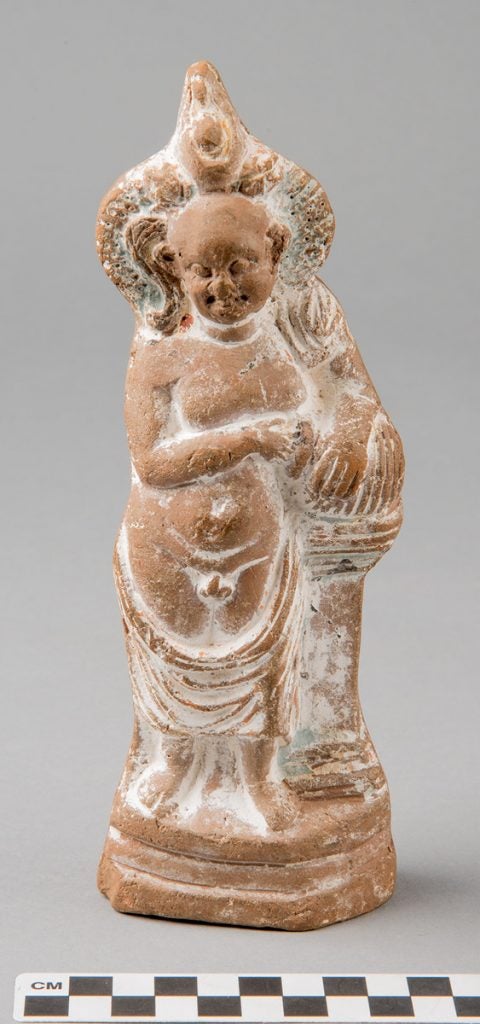Ugly Object of the Month — December 2020
By Caroline Roberts, Conservator
The final Ugly Object of 2020 immediately caught my eye when I spotted it leering back at me from its 1939 catalog entry. This grotesque male head was discovered at Seleucia-on-the-Tigris sometime between 1927 and 1932 during the joint U-M, Toledo Museum of Art, and Cleveland Museum of Art Expedition to Iraq. It is one of thousands of terracotta figurines discovered at the site, most of which were formed in molds — some from the same mold — and, originally, painted.

This figurine fragment wears a tall, pointed cap and a rather caustic expression, and the deep red pigment that remains on its face doesn’t exactly lighten the mood. According to the author of the catalog, Wilhelmina Van Ingen, the pointed cap could signal that this is the head of a priest – although she describes the object simply as a “grotesque male head.” Other figurine types, like lute-playing musicians, also wear pointed caps and are linked to temple life.
Whatever this bloke’s line of work, it doesn’t seem to be bringing him much joy. Or maybe the coroplast just caught him on an off day? I can relate!
Tune in for more Ugly Objects from the Kelsey collection in the New Year! Happy Holidays, everyone — and stay safe!
Ugly Object of the Month — December 2020 Read More »









